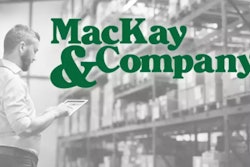
September isn’t usually considered a “cruel” month, like January, but it certainly turned cruel for Yellow Freight (aka YellowRoadway, YRC, etc.).
Far too many fingers are pointing in far too many directions to definitively assess the real blame for Yellow’s collapse. The laundry list includes the Teamsters, previous acquisitions, past and current management, financial mismanagement, competitive environment, cheap freight — and maybe even the weather.
There’s probably enough blame to spread around each of these causal factors and still have some left over for things we’ve left off the list.
It wasn’t always this way. Scroll back with us to 1980, the year that deregulation of the trucking industry (and other industries) was put in place. Yellow Freight System was the fourth largest for-hire Class 1 carrier in operation, trailing only UPS, Roadway and Consolidated Freightways. Yellow grossed $716 million in 1980, well behind UPS’ $3.9 billion and Roadway’s $1.1 billion but not far behind CF’s $936 million.
[RELATED: Aftermarket icon Stu MacKay inducted into industry Hall of Fame]
That’s the good news. The bad news is that Yellow lost $14 million in 1980; all the other top four companies were profitable. Yellow was not alone; 50 of the top 100 for-hire carriers lost money that year. In their defense, it was a recession year with serious inflation. However, UPS managed to pocket $160 million, Roadway $42 million and CF $14 million. Did Yellow’s troubles go all the way back to 1980?
Of the top 100 for-hire carriers operating in 1980, only 10 are with us today; 90 are either completely gone or have morphed into something quite different from what they were in 1980. Some have catapulted from way down the list in 1980 to near the top today:
- CRST was No. 100 in 1980; today they are No. 24.
- Old Dominion was No. 81; today they are No. 2 on the LTL list.
- Schneider was No. 32 in 1980 and is now fifth on the truckload carrier list.
- J.B. Hunt wasn’t even in the top 100!
So, are we done? None of us know for sure. But if history is any predictor of the future, we are probably not done.









